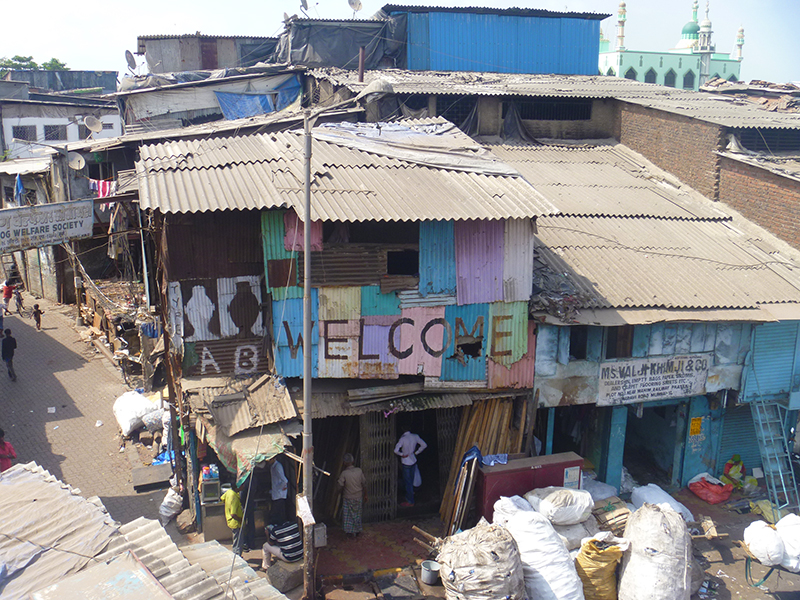Improving quality of life in informal settlements is a complex issue that goes beyond just providing adequate housing. In her final post reporting from her internship with SPARC, our student Tara Whelan takes a look at the case of Asia’s most densely populated slum.
While working with SPARC in slums across the city and learning about the numerous development plans underway, I thought I had acquired a pretty good understanding of slum upgrading and city planning in Mumbai. That is, until I took a locally run tour of Dharavi, the most populated and densest slum in Asia. Some of our work had brought us to this area in the weeks prior under the premise of conducting toilet studies, which involved speaking with community leaders to evaluate the performance and necessary improvements of sanitation systems. I was guided through the settlement by a local college student who had grown up there, which allowed me the freedom to communicate in my own language and better understand how this informal city really works. The experience shed new light on the redevelopment issues that matter most and gave me a better understanding of what is needed from us as professionals.
First and foremost, the majority of Dharavi residents wish to stay in Dharavi; it has been their home for generations. In terms of productivity, the community generates over 36 million USD a year (as cited in ReDharavi by SPARC and KRVIA). Residents feel that if they were provided with public amenities like the rest of the city, they could improve the living conditions themselves. However, the former peripheral fishing village sits adjacent to the new business district and nearby international airport–prime real estate ripe for public and private exploitation. In light of the area’s inevitable development, Dharavi residents want to acknowledged as citizens and defend their right to be involved and consulted throughout the transformation process.

Our guide explained how SPARC had been coordinating the interests of the community with the government’s development plans. Residents have opposed previous top-down approaches that neglected their interests and threatened their livelihoods. After the Dharavi Redevelopment Project of 2004 was abandoned, the state set up a committee of experts that included SPARC to work with the community in order to produce an alternative development plan, but their proposals have since been put on the back burner while other sectors undergo development. Many of the buildings that are proposed under the current Slum Redevelopment Act (SRA) are crammed within three meters of one another, leaving as much space as possible for sale on the open market as an incentive to developers looking to build subsidized housing. In response to this faulty scenario, residents are arguing for small-scale transformations to maintain diversity.
A key issue raised by our guide about the development plans for Dharavi was the fate of existing industries. A delicate balance between providing adequate housing and maintaining livelihoods is required, considering that many industrial warehouses serve as lodging for migrant workers and homes often double as workshops and storefronts. These multipurpose spaces are essential for lower income groups, yet their existence is in jeopardy due to the current zoning, building typology and health and safety regulations being put into place. SPARC has been working on multiuse proposals, but in order to preserve the current density within the constructible area, major compromises are made in open space. Considering that these workplaces constitute a majority of the income produced in Dharavi (as well as most of the waste and pollution); it is unreasonable to ask residents to choose formal housing over their own livelihoods.

In order to avoid gentrification, any development plan must incorporate as many existing residents as possible. In this case, the scheme excludes renters and provides a single housing unit to individual land owners as long as they can prove residency prior to the year 2000. This disqualifies much of the renting population, forcing them to the outskirts of the city, hours away from their workplace, and forces those that are eligible to downgrade in terms of functional space. The people of Dharavi insist on an inclusive approach that accommodates both renters and property owners while providing opportunities for employment.
The people of Dharavi, and of informal settlements in general, have a desire to take advantage of change to improve their circumstances; they are well aware of their rights as citizens and have realistic ideas on how they can be met. It is our role as development and planning professionals to make their interests heard and reflected in upgrading schemes in hopes of a more just and accessible city for all.



